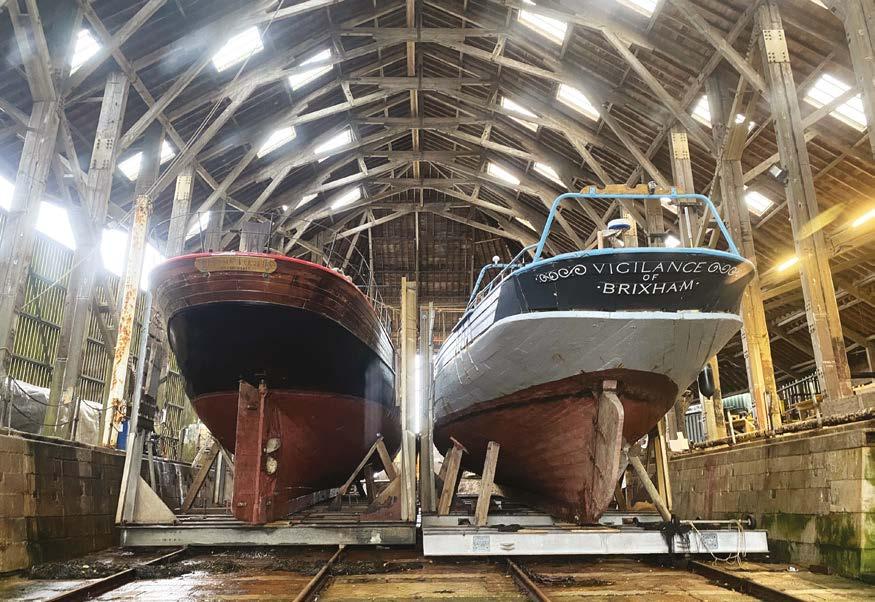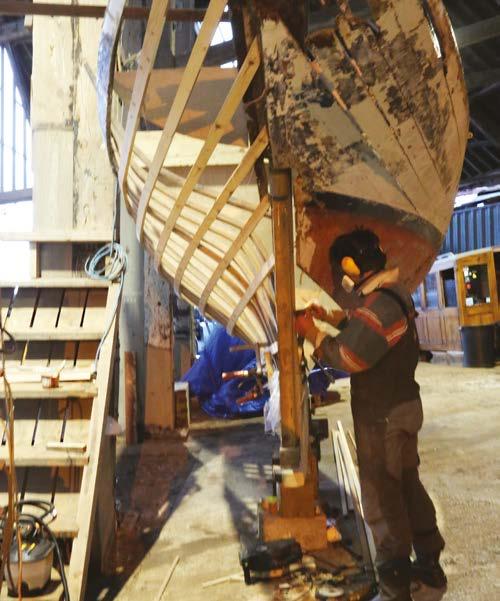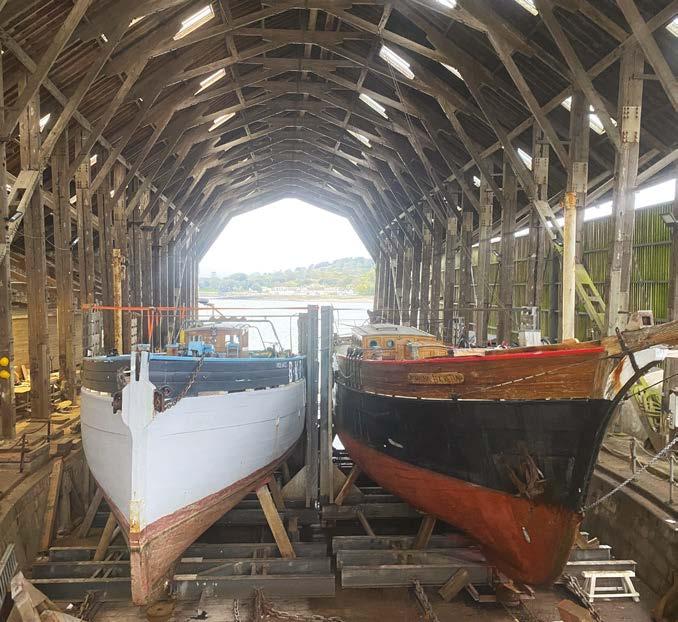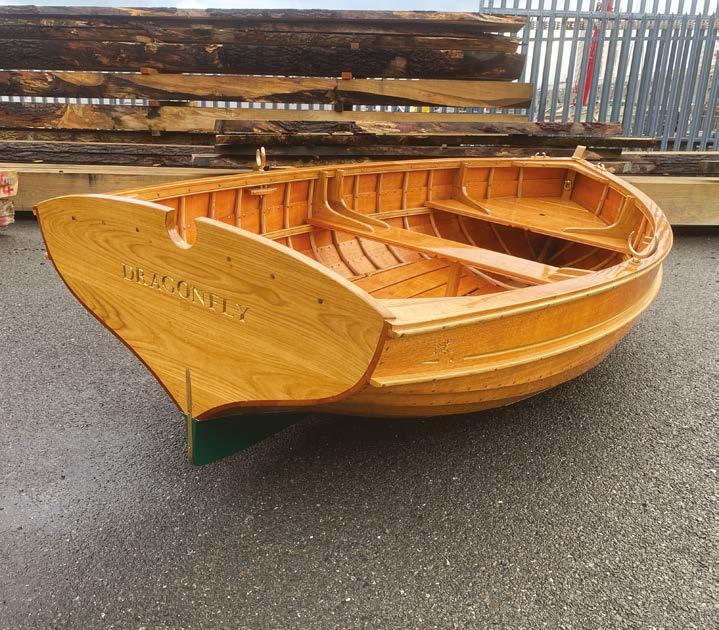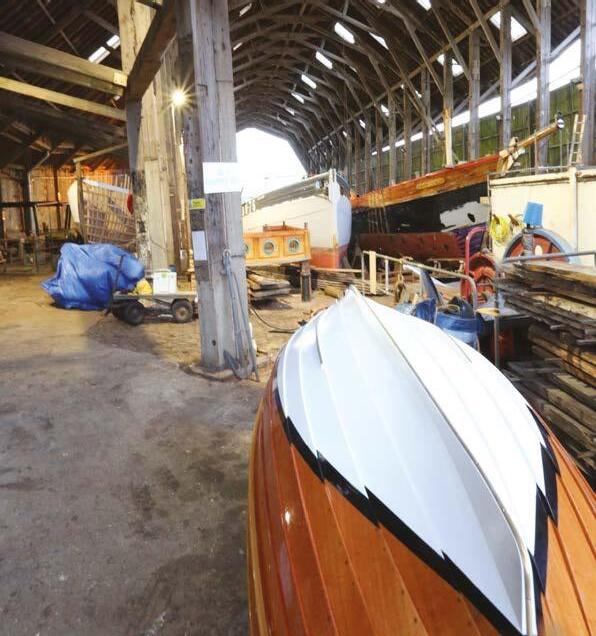






































The meticulously restored 8-Metre Vision returns to the classic racing circuit after a major restoration and has immediately picked up her old winning ways at the 2022 8-Metre Worlds
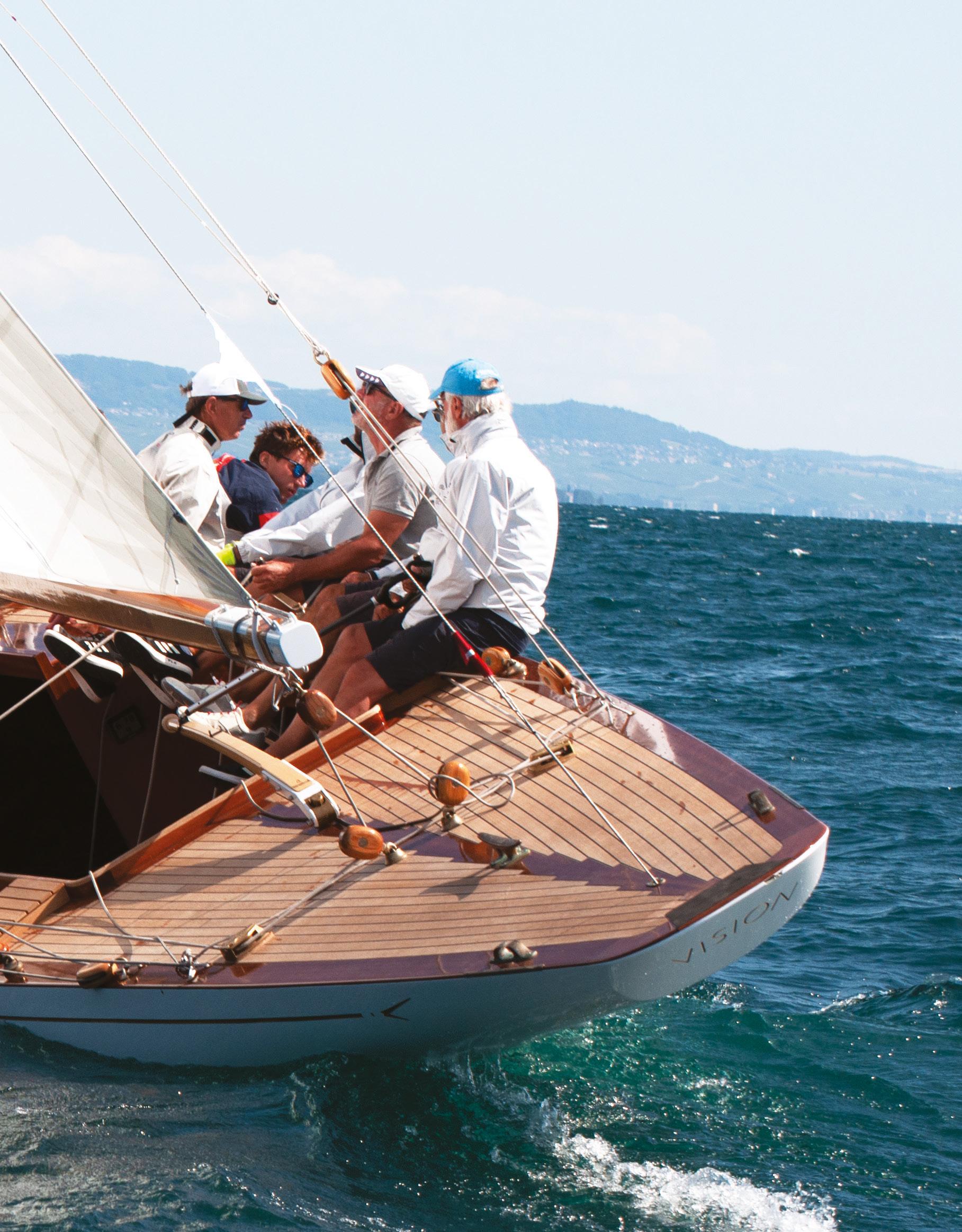 WORDS AND PHOTOS RON VALENT
WORDS AND PHOTOS RON VALENT
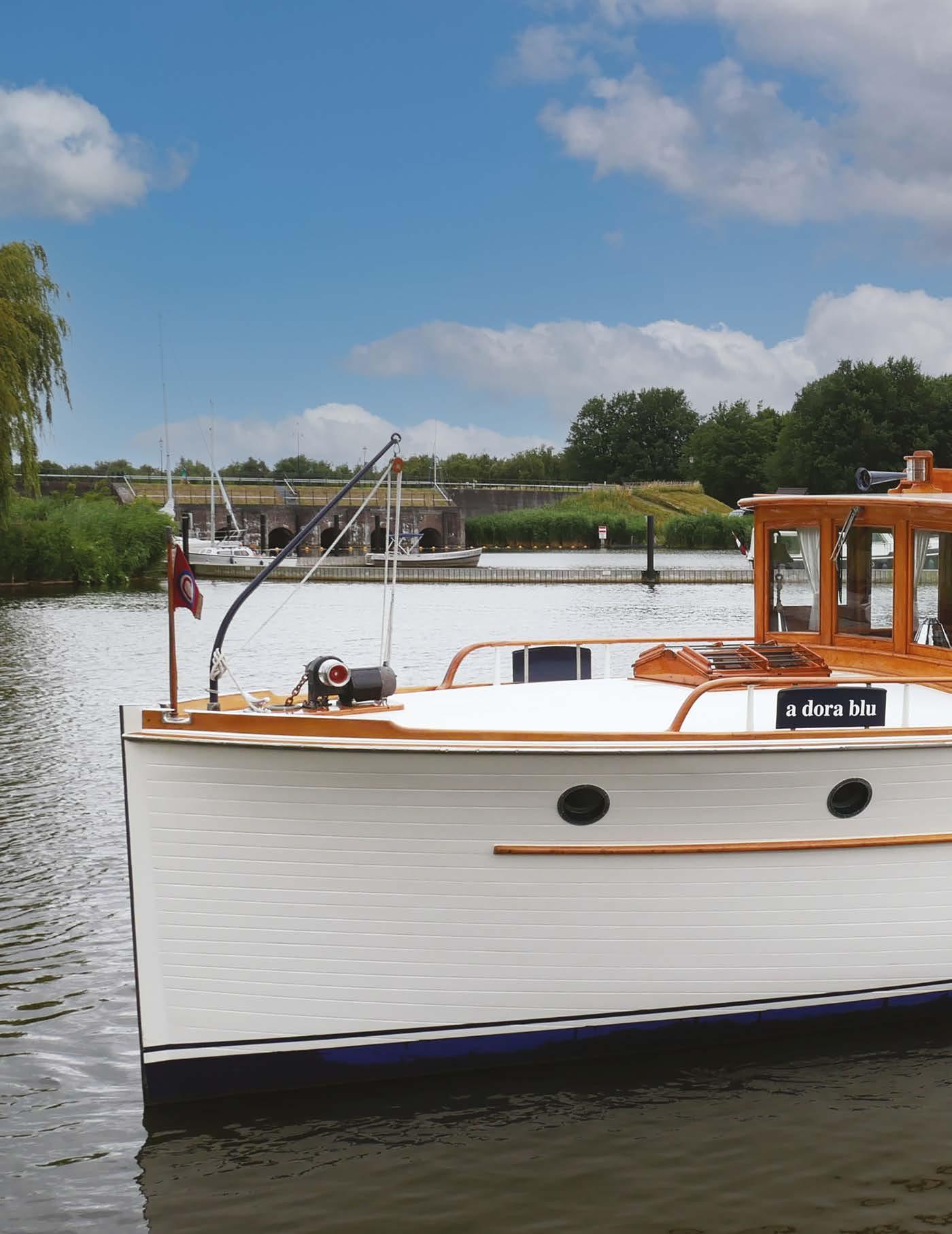
A’dora Blu is a shining example of a Stephens Brothers 43ft Fast Commuter motoryacht that served her country in more ways than one. Leo Aarens, the current owner, delves into the history of this distinguished yacht
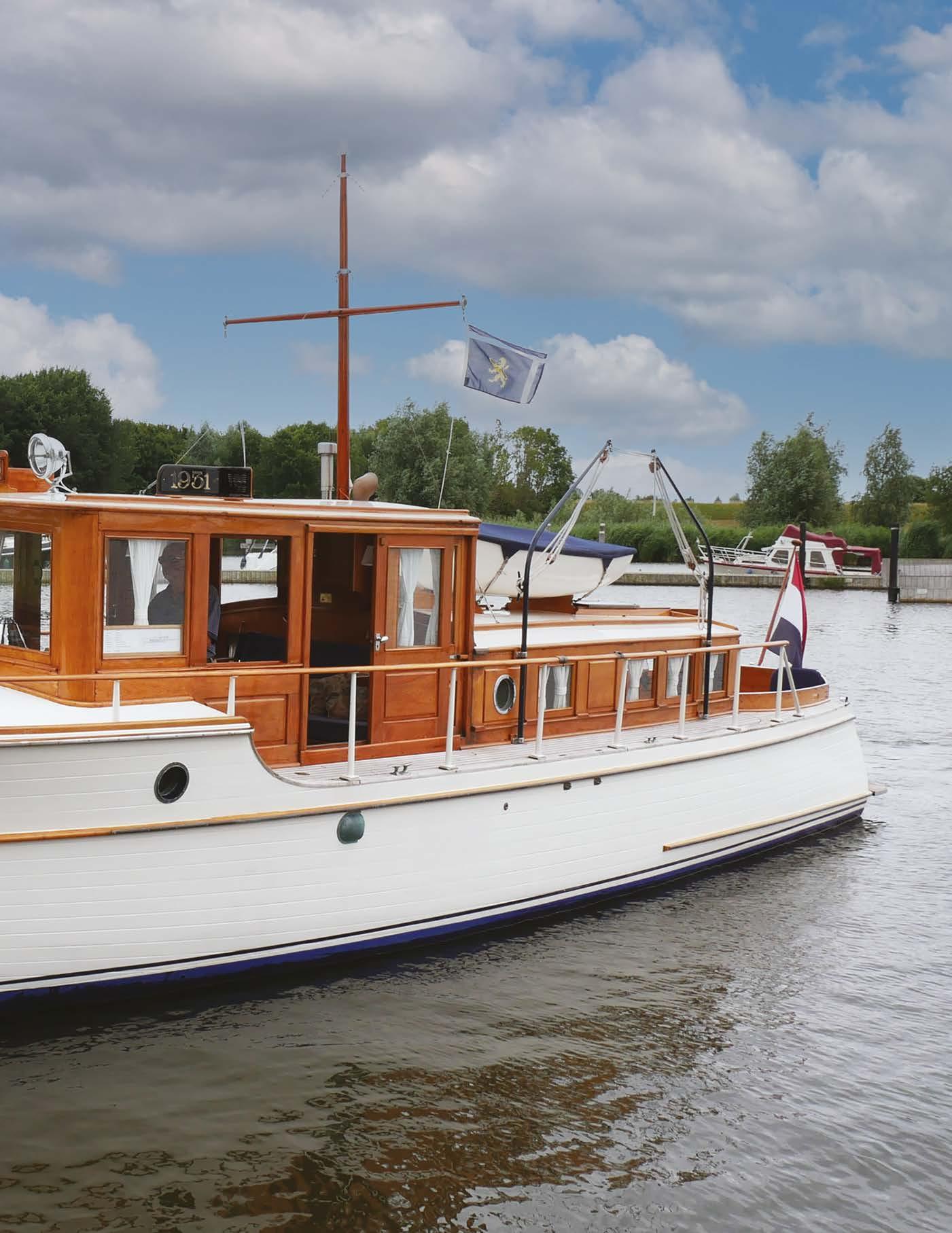
For thousands of years there was no choice for sailors but to use natural fibre ropes and to accept their disadvantages. They were prone to rot, although that could be lessened with tarring or waxing, and their construction – by necessity from countless, relatively short pieces twisted together, known as ‘spun yarn’ – determined that they were not particularly strong.
Soon after the Second World War synthetic ropes –more durable and inherently-stronger – started to appear. For many years, however, these ropes were only available in colours that wouldn’t suit classic boat owners who were keen to retain a traditional appearance.
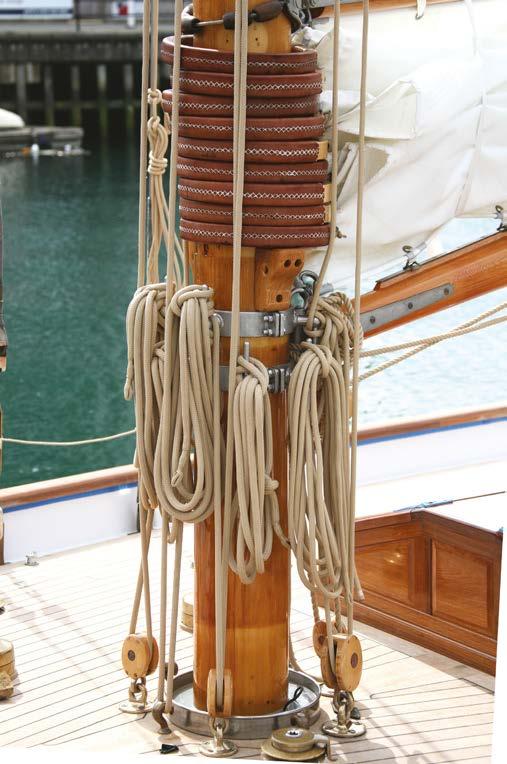
All that began to change in the late 1960s when several rope manufacturers produced a three-strand
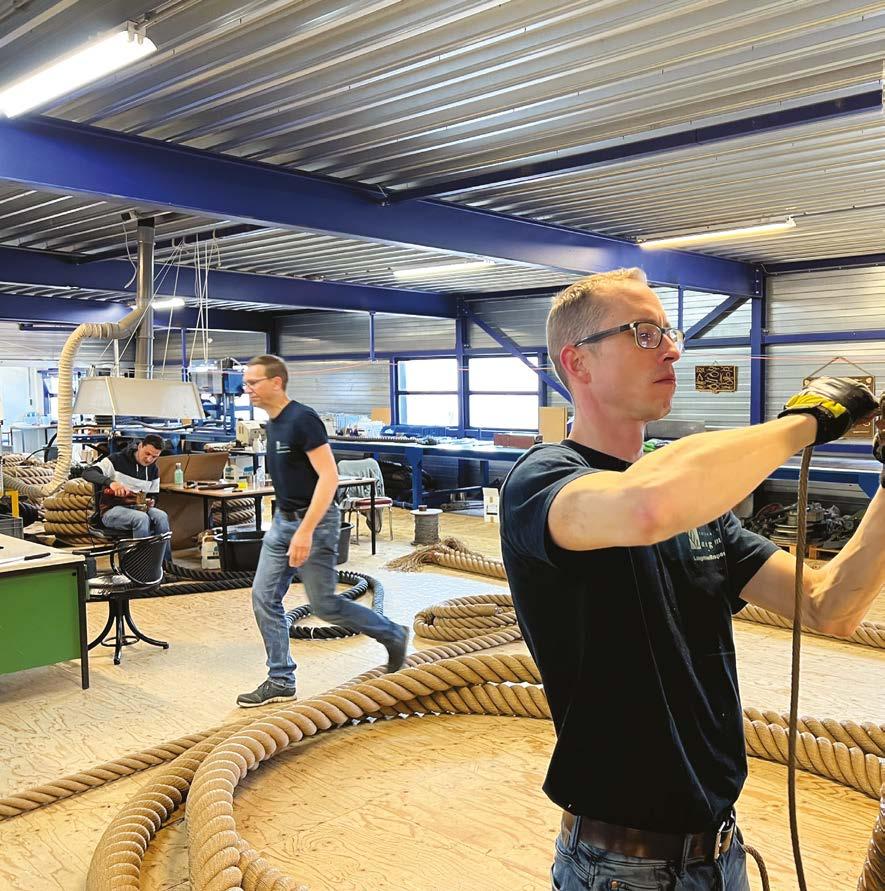
polypropylene in a beige colour with a slightly matt furry finish. In the 1980s rope specialists Jimmy Green Marine took things a stage further by commissioning Bridport Gundry to make a hemp-coloured, threestrand polyester: stronger and less stretchy than polypropylene and with better UV properties.
Subsequent developments included polyester braid-on-braid ropes, and then different core materials inside polyester braided covers to give better strength and/or stretch properties including Marlowbraid, Gleistein Cup and finally Dyneema cores (or Spectra, the equivalent trade name in the USA). There are now more than 50 different hemp-coloured rope products on the market, all of which – in fact many more – are also available in white, which may also be acceptable to some classic boat owners.
Ropes must, of course, be manufactured so they are practical. “Our products need to be durable, spliceable, flexible, and work in jammers and on winches and so on,” said Paul Dyer, Marlow’s Technical Manager. “All rope design and manufacture is a compromise and the trick is understanding what you are trying to achieve – it is often not about simple break strength.” In fact it may be misleading to compare different companies’ published breaking loads and stretch figures as they may be measured differently.
The quality of modern ropes is such that, in many cases, the selection of a rope based on its diameter (so that it will be easy to handle) will provide strength and stretch characteristics which are more than adequate for the task. In fact with classic boats there is a danger that you will over-specify your ropes, particularly with regard to stretch qualities. You need to be certain that your deck and hull structure, your spars and your fittings can take the sort of load that a modern rope will put on them.
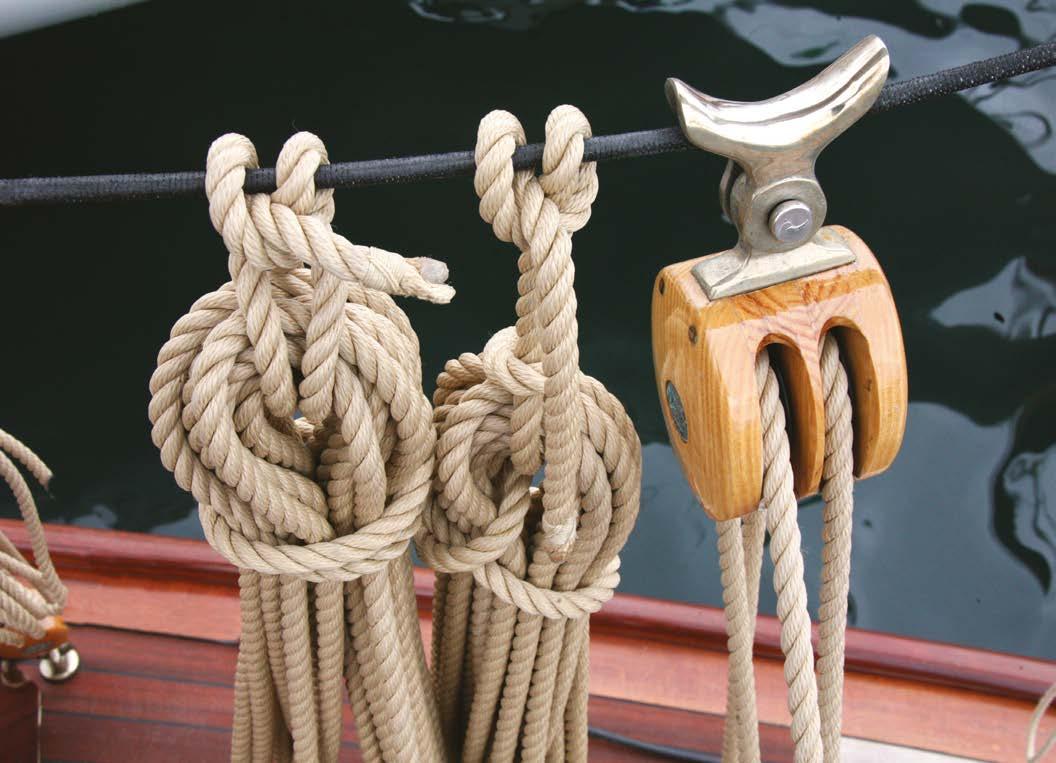
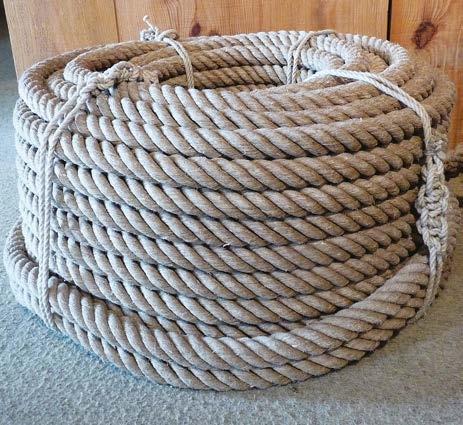
A great variety of rope types including braid-onbraid, braided covers with various cores, three-strand polyester and polypropylene, which are highly suitable for various applications, are available from numerous companies such as Marlow, Liros, English Braids, Kingfisher, FSE Robline, Jimmy Green Marine, Gleistein, Master Ropemakers, Cousin and Langman Ropes. Natural products such as hemp, manila, coir and sisal are also still available.

Above: Doubleended mainsheet
Right and below: Coils of hemp rope and tarred marlin
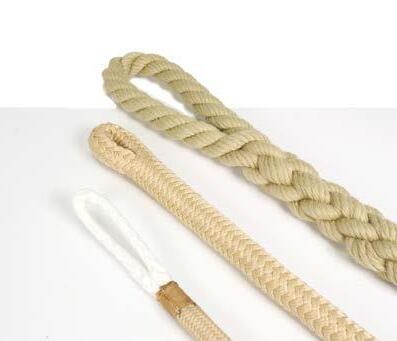
Bottom right, top to bottom: Spliced Liros Classic threestrand polyester; Liros Top Cruising braid-on-braid; Marlow D2 Racing 78

It seems like only last week that I was hove to in a pilot cutter off Newfoundland, wasting a fair wind and wishing I was anywhere else on the planet. In fact, it was 40 years ago, but time does funny things to one’s perspective. I was lying to because I was unsure of my position, but so much has changed in the four decades since then that the situation is barely recognisable today. The shape and performance of mainstream yachts has moved on, with wide-sterned cruisers and race boats careering around on foils, but the real revolution that affects us all is GPS. Even first-voyage tyros know where they are far out at sea. This astonishing fact is accepted as ‘read’ by the modern-yacht sailor who has grown up assuming the chart plotter will tell all, but the classic seafarer’s roots run deeper than that. Because our boats remain essentially unchanged and our seamanship is steeped in the traditional, we have a hotline to the days when position could only be found by observing the sun, moon and stars. Some degree of inherent doubt was always part of the picture then, and dealing with it had a profound affect on how sailors thought.
My situation back in 1983 illustrates the point. The shipmates and I were on passage in our 35-tonne, 1911 pilot cutter from Iceland towards the Belle Isle Strait between Labrador and Newfoundland. We had not had a good time of it. The original plan had been to call at southwest Greenland as we went by, stretching our legs ashore and looking over what was left of Erik the Red’s old Norse colony. The weather, however, didn’t play ball. Several weeks of southwesterlies had piled ice into the Greenland fjords, rendering a landing dubious to say the least and dealing us a rough ride dead to windward as a bonus. It was foggy off Cape Farewell, but the visibility cleared for a couple of hours. Just long enough to take a noon sight for latitude and to note that pack ice lay between us and the icy mountains we could see rising behind the coast. Then the fog returned. We had no radar, no GPS of course, and no radio for an up-to-the-minute ice report that might, or might not, have offered hope.
The season was late and time was running out, so taking a punt into the pack from an unconfirmed position didn’t seem
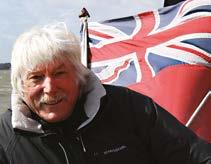
the brightest of ideas. Reluctantly we hardened our sheets and stood out to sea, close-hauled to the southwest towards our destination 700 or so miles away. Progress then became intermittent as a series of low pressure systems swept across us. When the wind backed southerly, or even east of south before the next warm front, we made good distance on the port tack. The front would veer the wind to dead ahead and it would blow with the best part of gale force. At this point we threw in the towel and hove-to as we waited for the blessed cold front. Unhindered by any land mass, this would show up unmistakably with a blast of icy air, a sharp veer in the wind and a few choice hailstorms for good measure. As the glass kicked up sharply, we’d let draw on starboard and hit the rhumb line for a day or so until the whole pantomime was repeated with the next depression.
Another benefit from the cold front was that we got to see the sun. Often it was through the clouds, but when you’d been finding your way round the oceans with only a sextant for 20 years or so, that was no problem. A single sextant sight doesn’t give you a fix. It leaves you with one position line. For a two-point fix, you need another sight later in the day. The first is run up to the second by good old dead reckoning, a transferred position line is plotted and the fix is the point at which the second observation was taken. Since this is already half an hour or so old and typically three miles adrift by the time the plot is on the chart, you’ll see that astro is, by comparison with what we have now, an inexact science. Happily though, taken by and large, it didn’t usually matter. With obvious exceptions like parts of the Pacific, the oceans are wide and there isn’t a lot to hit. Today’s fixation with super-accurate positions isn’t really relevant at all. So long as you can get within a couple of miles, you’re going to find a respectable landfall. That was the level of accuracy to hope for. Five miles, or even ten would get you there, especially on a well-lit coast after dark. Stars were even more accurate if conditions were right, and I still have one or two old star plots where several position lines cross within the width of the pencil point that is plotting them. Classical navigation only started to get challenging when you couldn’t see the sky, and it
Despite the brilliance of GPS, sometimes the best thing is compass, echo sounder, log, lookout and trust in the Lord
ILLUSTRATION CLAUDIA MYATT
was a lot worse when this went on for several days with landfall approaching.
As the Belle Isle Strait came within realistic reach, we only had one jib left and that was the tiny spitfire. The rest had blown out. The heavy canvas main was holding on but we were down to it, the staysail and very little on the bowsprit, which wasn’t doing a lot for forward progress. Not to mince words, we’d been beating our brains out, everything was wet and we were stone cold despite having the coal stove roaring away continuously from Iceland. Morale was struggling until one morning the wind shot round into the northeast and freed us. Most gaff cutters don’t sail worth tuppence to windward without the right jib. We were no exception, but on a reach or a run she manages a whole lot better and away we went at six knots. The prospect of ‘all night in’ and a beer in a warm, friendly bar was suddenly realistic and morale shot through the deckhead. The hands were jubilant, but not me. I had a new problem. I didn’t know where we were.
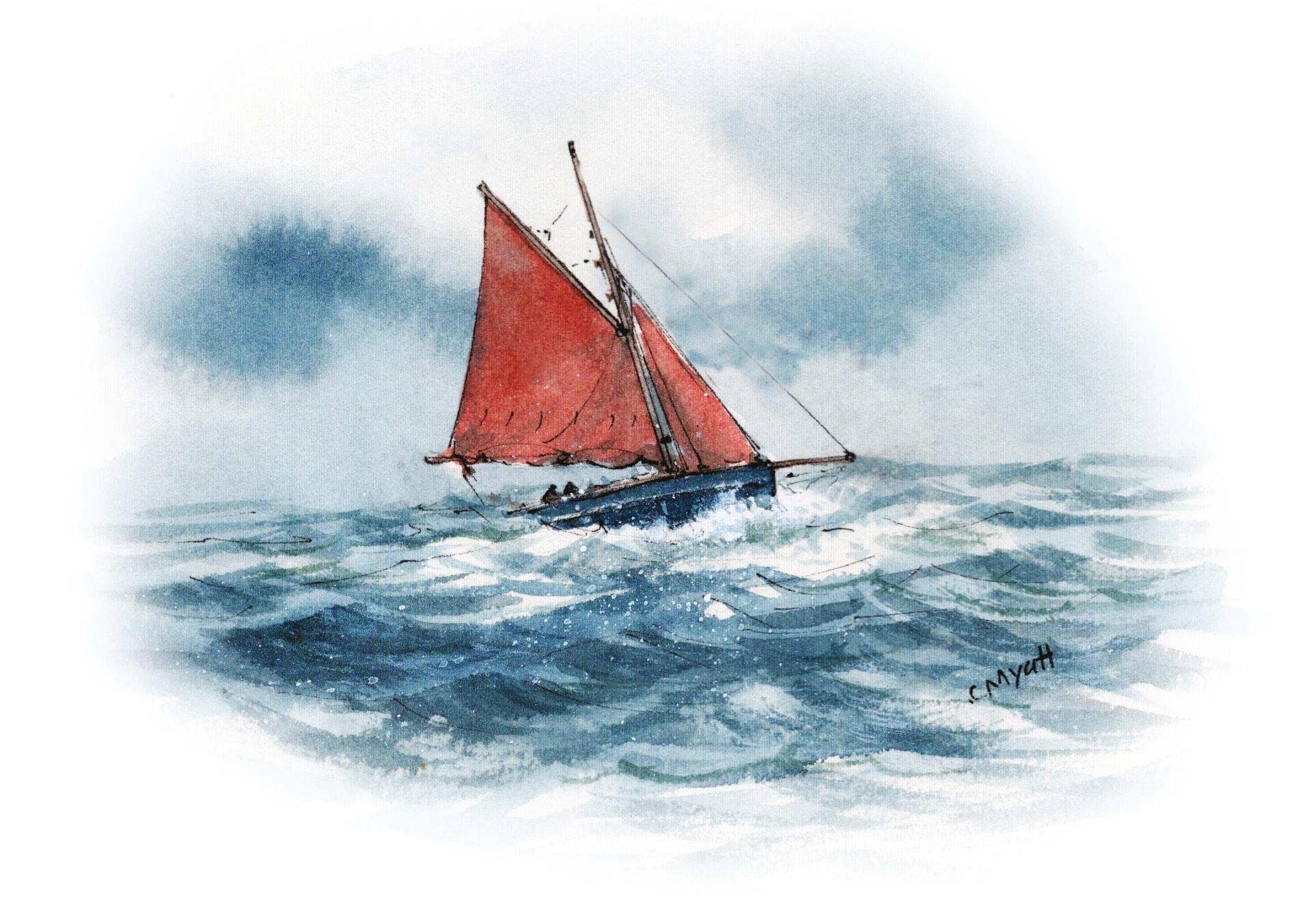
We hadn’t seen the sun for 72 hours of close-hauled sailing with two or three tacks thrown in to muddy the water. Infuriatingly, the clouds refused to break. If anything, visibility had taken a turn for the worse. Navigation from our last astro fix was down to dead reckoning or, to slightly misquote the great Captain Lecky, ‘Compass, echo sounder, log, lookout and trust in the Lord’. The only certainty was that an ironbound coast and our destination lay dead to
leeward. Our DR position could well be as much as 30 miles adrift and it was blowing harder every minute. Running in was simply not an option. We’d just have to wait. And so, after a fortnight of the sailor’s hell of hammering to weather through ice and fog, when at last we were served up a fair wind, we couldn’t use it. That night it blew great guns as we lay under double-reefed staysail and deep-reefed main. In the morning the screaming wind eased down to a moderate gale, but still the scud drove across the sky. Just on noon, it finally broke for a snapshot of the sun. We had a latitude. Unbelievably, this plotted within a few miles of the DR. Two hours later with the breeze down to Force 5, a second sight gave us a fix just 30 miles from l’Anse aux Meadows where shelter of sorts awaited us. We let draw and crammed on what sail we could. Soon, the land appeared, with salient points stacking up with the chart. At seven knots we were in well before dark. Boats were wrecked in the harbour. Bollards were ripped out of the concrete docks. It had been a memorably bad night all round. Goodness knows how we’d have fared if we’d been sure of our position the previous afternoon and had run in for shelter. Looking at the carnage, it didn’t bear thinking about. We’d been saved by our uncertainty and a seamanlike decision about how to handle it. Although nobody in his right mind could lament the GPS revolution, sometimes there’s something to be learned from the old ways.
